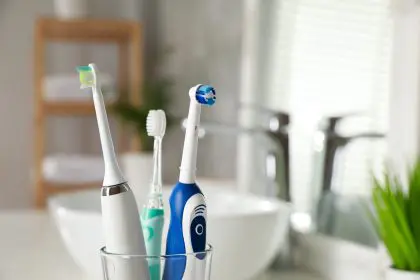Dark spots appearing on the tongue can create immediate worry and concern for many people. These mysterious marks often develop without warning, leaving individuals wondering whether they signal a serious health problem or represent something completely harmless. Understanding the various reasons behind tongue discoloration can help distinguish between normal variations and situations requiring medical attention.
The tongue serves as a window into overall health, and changes in its appearance frequently reflect broader bodily processes. While some dark spots indicate underlying medical conditions, many cases stem from completely benign causes that require no treatment beyond improved oral hygiene or lifestyle adjustments.
Medical professionals encounter tongue spot concerns regularly, and most cases involve straightforward explanations with simple solutions. However, recognizing when these marks warrant professional evaluation remains crucial for maintaining optimal health and peace of mind.
Natural pigmentation variations create harmless dark areas
- Benign oral pigmentation differences
The most frequent explanation for dark tongue spots involves natural pigmentation variations that occur completely normally in many individuals. These spots typically appear as dark brown or black patches that may be surrounded by areas of normal pink or red tongue tissue.
This condition, medically known as benign oral pigmentation variant, affects people of all backgrounds but appears more commonly in individuals with naturally darker skin tones. The spots usually become noticeable during the twenties or thirties, though they can develop at any age.
These natural pigmentation changes pose no health risks and require no treatment. The spots may remain stable for years or gradually change in size and intensity over time. Unlike concerning growths, these benign variations maintain smooth surfaces and cause no discomfort or functional problems.
Hair-like growths create dark tongue appearance
- Hairy tongue condition develops from various factors
Despite its alarming name, hairy tongue represents a completely harmless condition that can create dark spots or patches across the tongue surface. This condition develops when tiny projections on the tongue grow longer than normal, creating hair-like structures that trap bacteria, food particles, and other substances.
The trapped material often darkens over time, creating black or dark brown spots that may cover significant portions of the tongue. While the appearance can be disturbing, hairy tongue causes no pain or serious health problems.
Several factors contribute to hairy tongue development, including inadequate oral hygiene practices, certain fungal infections, prolonged antibiotic use, tobacco smoking, excessive coffee or tea consumption, and overuse of antibacterial mouthwashes. Radiation treatments targeting the head or neck area can also trigger this condition.
Medications frequently cause tongue discoloration
- Iron and mineral supplements leave dark deposits
Various medications can cause dark spots to develop on the tongue through different mechanisms. Iron supplements represent one of the most common culprits, often leaving dark deposits that accumulate over time with regular use.
Bismuth-containing medications, particularly those used for stomach upset, frequently cause temporary tongue darkening that resolves once the medication is discontinued. The metallic compounds in these treatments bind to proteins in the mouth, creating distinctive dark coloration.
- Prescription drugs alter tongue appearance
Certain prescription medications can also contribute to tongue spot development. Some antibiotics, particularly those used for extended periods, can disrupt the normal balance of oral bacteria and fungi, leading to unusual pigmentation changes.
Antipsychotic medications, seizure treatments, and antimalarial drugs have all been associated with tongue discoloration in some patients. Additionally, medications that reduce stomach acid production can sometimes contribute to oral pigmentation changes by altering the mouth’s normal chemical environment.
Medical conditions manifest through tongue changes
- Hormonal disorders affect tongue pigmentation
Several underlying health conditions can cause dark spots to appear on the tongue as part of their broader symptom patterns. Addison’s disease, which involves insufficient adrenal gland function, commonly causes increased pigmentation throughout the body, including the mouth and tongue.
Hyperthyroidism can also contribute to oral pigmentation changes, though this occurs less frequently than with adrenal disorders. These hormonal imbalances affect melanin production and distribution, leading to darker areas in various body locations.
- Infections create tongue discoloration
Various infections can contribute to dark spot development on the tongue. Candidiasis, a fungal infection commonly known as thrush, can cause patches of discoloration along with other symptoms like white coating or soreness.
More serious infections, including tuberculosis in rare cases, may also manifest with oral symptoms including tongue spot development. HIV can contribute to various oral health changes, including unusual pigmentation patterns.
- Rare genetic conditions cause distinctive patterns
Peutz-Jeghers syndrome represents a rare genetic condition that causes distinctive dark spots to appear in the mouth, including on the tongue. This inherited disorder also causes similar spots on the lips and around the mouth, creating a characteristic pattern that helps with diagnosis.
While extremely uncommon, this condition requires medical monitoring due to its association with increased cancer risks in other parts of the body. The tongue spots themselves are harmless, but they serve as important diagnostic markers for this genetic syndrome.
Recognizing when professional evaluation becomes necessary
Most dark tongue spots develop without accompanying symptoms and resolve on their own or with simple care measures. However, certain situations warrant prompt medical evaluation to rule out more serious underlying conditions.
Spots that persist for more than two weeks despite improved oral hygiene deserve professional assessment. Any spots accompanied by pain, swelling, difficulty swallowing, or breathing problems require immediate medical attention.
Changes in spot size, texture, or color over time should also prompt medical consultation. While most tongue spots remain stable, progressive changes can sometimes indicate more serious conditions that benefit from early intervention.
Healthcare providers typically begin evaluation with a thorough examination of the mouth and tongue, followed by questions about medical history, current medications, and oral hygiene practices. Additional testing may include blood work to check for underlying conditions or, in rare cases, tissue sampling for microscopic examination.
Effective treatment approaches for tongue spots
Treatment for dark tongue spots depends entirely on their underlying cause. When medication use contributes to spot development, healthcare providers may suggest alternative treatments or adjust dosing schedules to minimize oral side effects.
For hairy tongue conditions, treatment focuses on removing the accumulated debris and preventing recurrence. Regular tongue cleaning with a soft brush or scraper can help remove trapped material and restore normal appearance.
Underlying medical conditions require appropriate treatment of the primary disorder, which often leads to improvement in associated oral symptoms. Hormonal disorders may need specific medications or treatments, while infections typically respond to appropriate antimicrobial therapies.
Maintaining optimal tongue health prevents many problems
Several practical steps can help prevent tongue spot development and maintain overall oral health. Regular brushing and flossing create the foundation for good oral hygiene, while daily tongue cleaning removes bacteria and debris that can contribute to various problems.
Limiting consumption of staining substances like coffee, tea, and tobacco products reduces the risk of tongue discoloration. Maintaining a balanced diet rich in vitamins and minerals supports overall oral and systemic health.
Regular dental checkups allow for early detection of oral health problems and provide opportunities for professional cleaning and guidance. Dentists and dental hygienists can identify concerning changes early and recommend appropriate follow-up care when needed.
Moving forward with confidence about tongue health
Understanding the various causes of dark tongue spots empowers individuals to make informed decisions about their oral health care. While these spots can initially cause concern, most cases involve benign conditions that require minimal intervention.
The key lies in recognizing normal variations versus changes that warrant professional evaluation. With proper oral hygiene, awareness of contributing factors, and appropriate medical care when needed, most people can maintain excellent tongue health throughout their lives.
Regular attention to oral health, combined with awareness of when to seek professional guidance, provides the best approach for managing tongue spots and maintaining overall oral wellness. Most individuals find that simple care measures effectively address their concerns while providing peace of mind about their oral health status.













